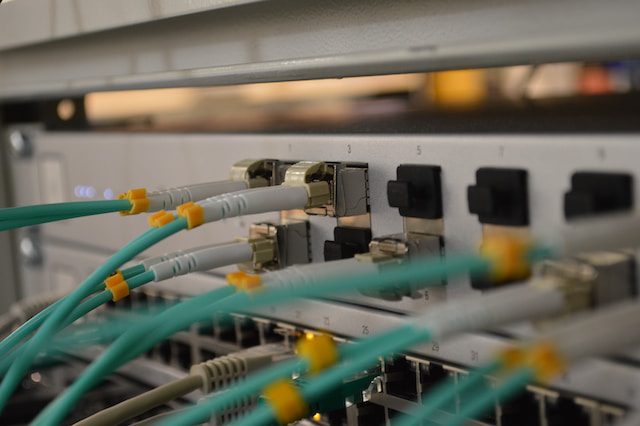To carry data, fiber optic cables utilize light rather than electricity. Information is sent over very thin strands of glass or plastic across great distances and at lightning speeds. Fiber optic cables’ rapid and efficient data transmission is only one reason for their rising popularity. The seven most prevalent applications of fiber optic cables are discussed below.
Common Applications of Fiber Optic Cables
Internet and Telecommunications
Fiber optic cables are often used in the telecommunications and internet industries. Telephone and internet service providers, individual residences, and companies all utilize LC LC fiber connections to connect to the internet. Internet and phone connectivity in this area have improved greatly because of the deployment of fiber optic lines.
Cable Television
Fiber optic connections are often used by cable television networks in order to transport television signals from the service provider to the residences and places of business of customers. Cable television users may enjoy the improved picture and sound quality due to the widespread use of fiber optic connections in this business.
Medical Equipment
Many medical tools, including endoscopes and surgical instruments, use fiber optic cables. Light may be sent via the wires, giving surgeons a clear view of inside organs. More precise diagnoses and less-risky operations are two outcomes of the widespread use of fiber optic cables in medical equipment.
Military and Aerospace
The military and aerospace industries also make extensive use of fiber optic connections, allowing for data transmission between various parts of an aircraft or spacecraft. Fiber optic connections have allowed quicker and more reliable communication, both essential in the contexts above.
Industrial Automation
Fiber optic cables find further utility in industrial automation setups. They enable sensors and other components in industrial equipment to communicate with one another, leading to streamlined and automated production. Fiber optic cables’ application in industrial automation has increased output and less downtime.
Transportation Systems
Transportation networks also often use fiber optic lines. Many parts of cars and transportation infrastructure, such as traffic lights and train crossings, need them to communicate with one another. Due to installing fiber optic connections, transportation networks are now safer and more efficient than ever before.
Power Transmission
Electrical power is transmitted through fiber optic lines as well, and they convey information between power system components and are used for monitoring power grids. Fiber optic cables are increasingly being used to transmit electricity, which has increased the grid’s dependability and efficiency.
Factors to Consider About Fiber Optics
Distance
Transmission distances through fiber optics are far greater than those over copper cable, although they are still not unlimited. Choosing the right fiber optic cable requires knowing the distance it will need.
Bandwidth
The capacity of a fiber optic connection to carry information. The data transmission capability of a fiber optic cable is determined by its bandwidth, and the right bandwidth must be chosen according to the data transfer needs of the application.
Type of fiber optic cable
Single-mode and multi-mode fiber optic cables are two examples of the many varieties on the market. Single-mode fibers best accomplish long-distance transmission, whereas multi-mode fibers may accomplish shorter transmission lengths.
Benefits of Fiber Optics
High-speed data transfer
Data may be sent using fiber optic cables at extremely high rates, far higher than those of more conventional copper connections. Because of this, they are an excellent choice for high-bandwidth applications like video streaming, cloud computing, and online gaming.
Immunity to electromagnetic interference
In contrast to copper connections, fiber optic cables are immune to the detrimental effects of electromagnetic interference. This ensures they won’t cause any problems even when placed near wires and cables for other purposes.
Security
Since they are difficult to penetrate, fiber optic cables are a more secure choice when transmitting confidential information. They do not let off any electromagnetic signals, which makes it more difficult to track them down and intercept them.
Conclusion
In conclusion, there are several applications for fiber optic cables. Fiber optic cables have changed how we transfer and receive data in various fields, including telecommunications, medicine, and the delivery of electricity. More and more applications for fiber optic cables are likely as technology advances.
